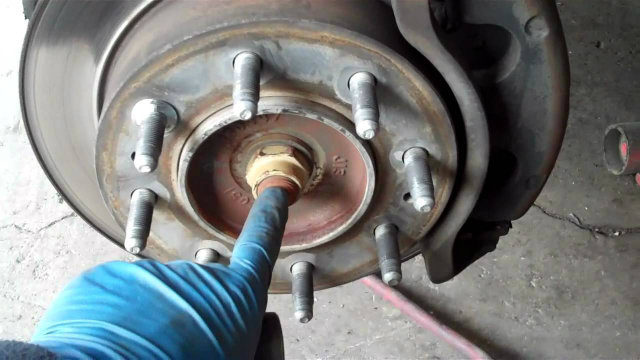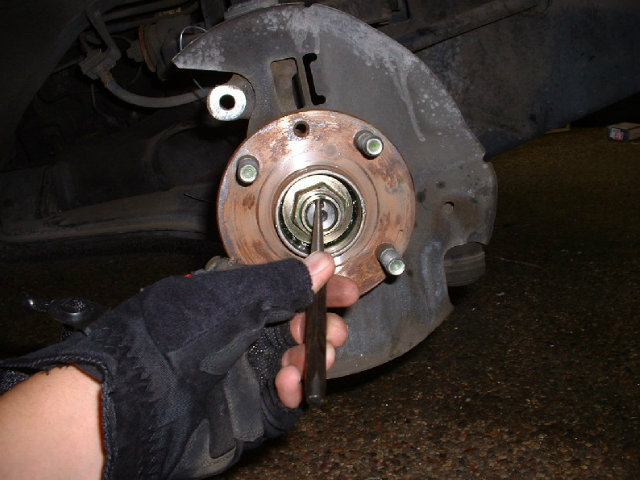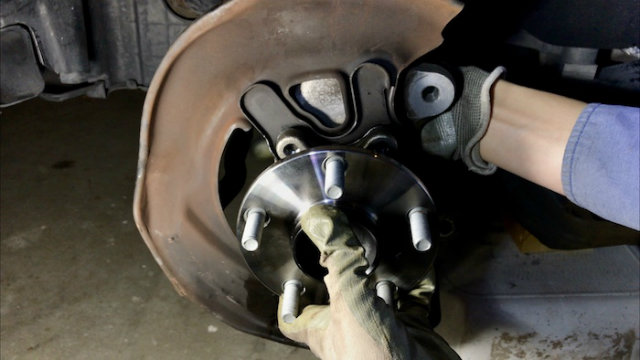Vehicle Essentials: The Importance of Wheel Hubs
Wheels may look like they operate simply, but they are not called mankind’s best invention in vain. Whilst old wooden wheels weren’t as complicated as today’s car wheels, they provided the rotational force needed at the time, but nowadays, with plenty of new tech at our disposal, there’s no way a wheel can stay that simple.

The number of main wheel components goes up to a total of 6. First, you have the centre bore which is basically the opening of the wheel which allows it to fit on the axle. The centre disc is where the bolt holes are placed and what gets into contact with the axle seat. The lug holes are what makes the bolt circle. The spokes are what connects the centre disc to the ring of the wheel. The outer lip is the area of the wheel in front of the spokes. The barrel is the outermost part of the wheel and it is where the tire is mounted and lastly you have the wheel hubs.
What Is a Hub on a Wheel?
This component is located between the drive axle and the brake drums/ disc (brake). The car wheel hub is a crucial part that contributes to safe steering and it is the link that attaches the wheel to the car. The hub contains the wheel speed sensor which controls the ABS braking system and the assembly is also important for your vehicle’s (TCS) traction control system.
Does a Hub Assembly Come with Wheel Bearing?
Alongside the electronic safety features, a hub assembly also comes with wheel bearings as it also helps the wheel turn freely.
How Often Should Wheel Bearings Be Replaced?
Whilst OEM bearings can last longer than replacements, they also need to be replaced every 120,000km to 240,000km.

How to Tell If Your Wheel Bearing Is Going Bad?
There are different symptoms that tell you when your wheel bearings have gone bad.
The most common indicator is the roaring sound when metal is grinding on metal, which usually occurs due to lack of lubrication which means the bearing is worn out.
Another indication of damage is when the steering wheel is vibrating at a low speed and it gradually intensifies, the more you push on the gas pedal. Again, this is also the case of a worn out wheel bearing which can lead to the steering wheel feeling loose when turning or when driving downhill.
If you hear a clicking sound coming form the wheels which becomes repetitive when you accelerate, there could be a problem with the car wheel hub too. This is the result of the brake caliper hitting the top of the wheels as it moves up and down which can indicate that the wheel hub assembly has been broken.
Knocking or clunking sounds are the result of excessive play in the CV and U-joints or excessive backlash in the differential gears. Whilst this is not usually related to the bearings, it can be felt when changing directions – going from forward to reverse or from accelerating to coasting.
A worn or damaged outer CV-joint can be the reason why you are hearing snapping, popping and clicking noises. This can also be associated to excessive bearing end play which can also produce inadequate clamping. You will usually hear these noises when making sharp turns or when cornering.

How to Check a Hub Bearing Assembly?
Before you start taking parts of the wheel out, make sure there is a reason for you to do that, in other words, if your vehicle has experienced any of the symptoms mentioned above.
1. Start by performing a full hand rotation on the wheel by grabbing it by the 3 and 9 o’clock positions. Make sure you push and pull while turning the wheel and do a second check but this time by getting a hold of it on the 6 and 12 o’clock positions. Feel and listen for any roughness.
2. Remove the lug nuts holding the wheel together with the wheel and then remove the caliper from the caliper-mounting bracket. Remember to support it with an “S” shaped hook or a piece of wire. Afterwards, remove the caliper-mounting bracket and the brake rotor too.
3. Once you get to the hub bearing assembly start rotating it by hand – if it’s loose this is a sign of bearing damage and the axle nut may be backed off or you may have an improper axle nut clamping. Bearing damage can have symptoms such as roughness, looseness or noise from the bearing assembly which often requires replacement.
4. The internal clearance of the assembly should be checked using a dial indicator which has a magnetic base. But you should clean and smooth out the places where you’ll put the indicator’s base and tip. You can use an emery cloth, a honing stone, a fine file or a wire brush to remove burrs, debris and nicks.
5. You’ll position the dial indicator base on the knuckle or a safe place on the suspension. When positioning the indicator tip, make sure the indicator has enough travel. Place the indicator tip perpendicularly on the wheel pilot and as close as you can to the centre of the hub to get the most accurate results. Again, grasp the wheel flange by the 3 and 9 o’clock positions and push it while turning the hub about 90° from one side to the other for at least five times. If the total indicator movement goes beyond 0.010cm, the hub needs to be replaced.



